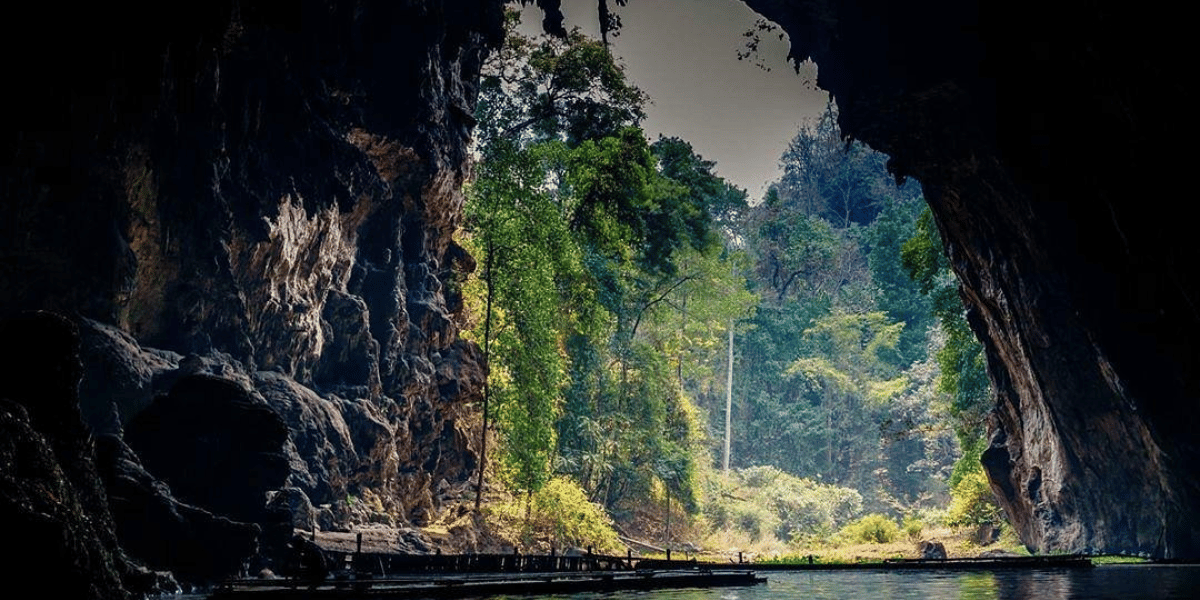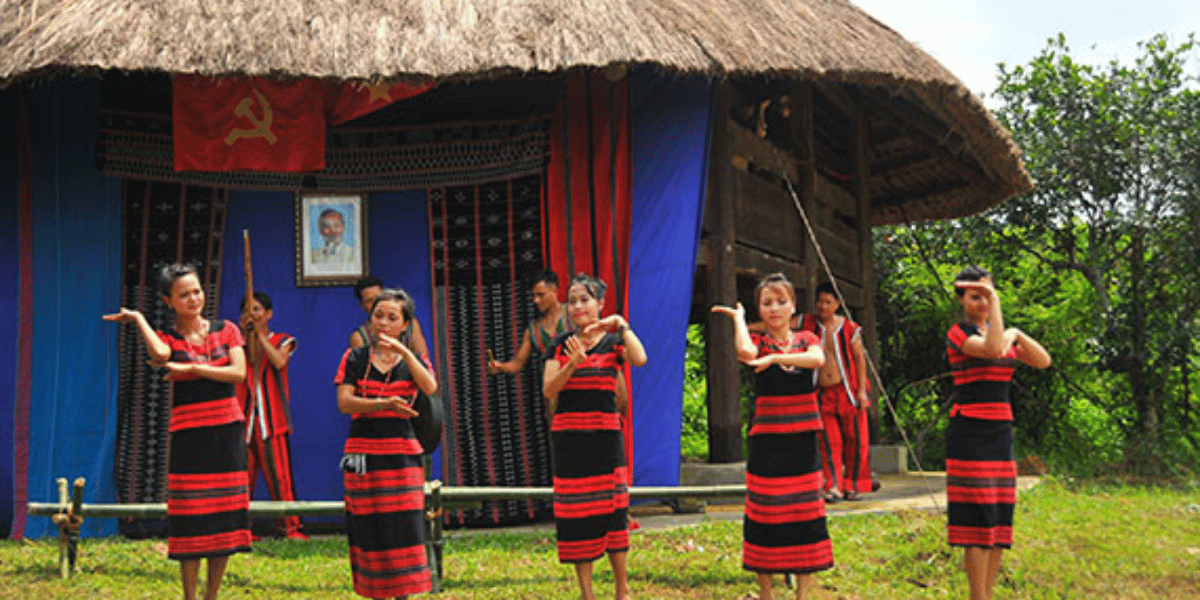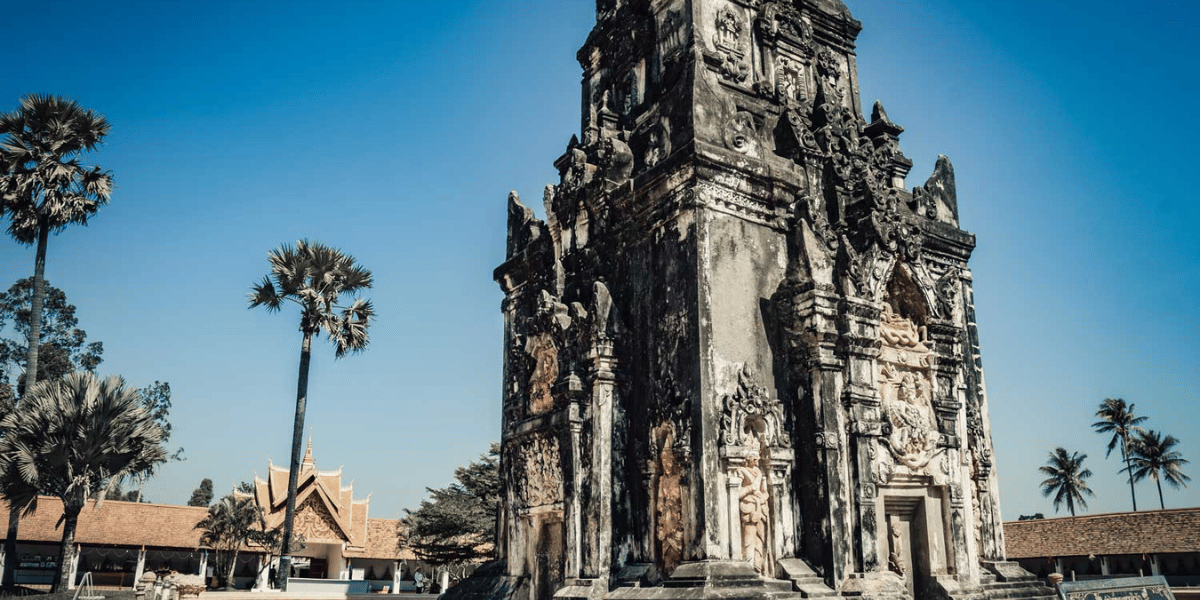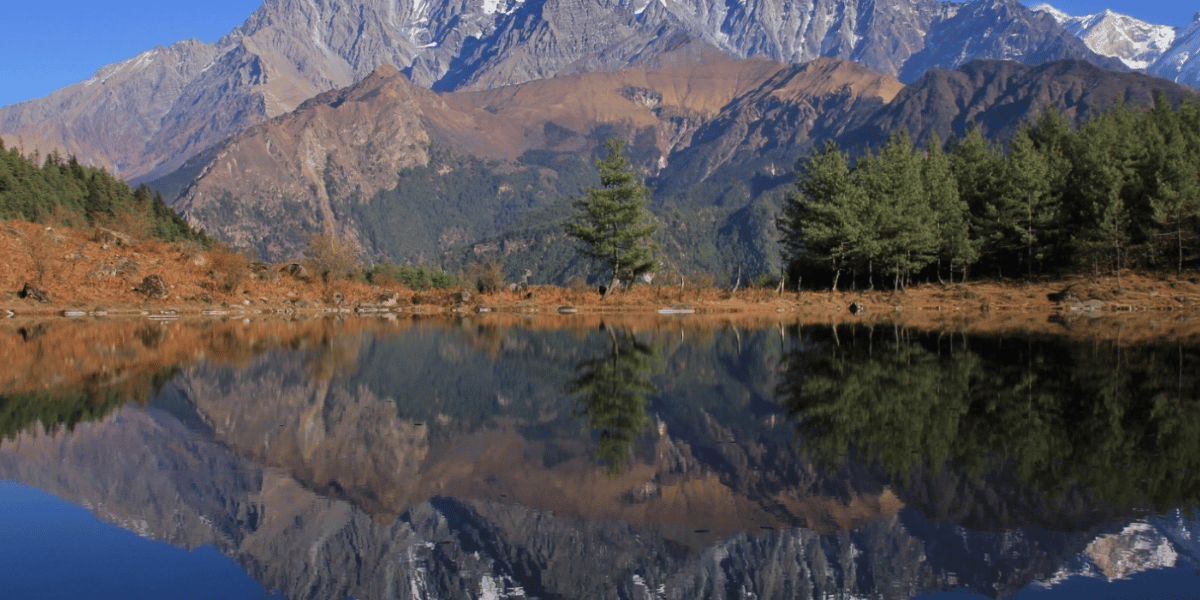Discover the Untouched Beauty of Xayaboury, Laos
Last Updated on 23 December, 2024 by admin
Xayaboury, a province located in northern Laos, is celebrated for its breathtaking natural landscapes, diverse cultural heritage, and the warm, welcoming nature of its people. Nestled among rugged mountain ranges, the region boasts dramatic waterfalls, mysterious caves, and traditional ethnic villages that offer a glimpse into a way of life preserved for generations.
The untouched beauty of Xayaboury, from its verdant hills to the majestic rivers winding through rural villages, presents an ideal destination for those seeking to explore both nature and culture. The province’s charm lies in the simplicity of its landscapes and the depth of its traditions, making every visit feel like a journey into the heart of Laos.
During my trip to Xayaboury, I was struck by the tranquillity of the place. Trekking through its dense forests and visiting the local villages, I encountered families living in harmony with nature, their daily lives intertwined with the landscape. One of the highlights was visiting a secluded waterfall after a short hike – the sound of the water crashing down into the crystal-clear pool below was mesmerising. Sitting there, surrounded by untouched wilderness, I truly felt connected to the natural world and the culture that has thrived here for centuries.
Xayaboury promises a rich experience, where travellers can immerse themselves in the province’s natural wonders, engage with the vibrant local communities, and find moments of serene reflection in the unspoiled beauty of Laos.
Top Attractions in Xayaboury
Xayaboury province is full of hidden gems waiting to be explored. From majestic waterfalls to cultural villages, here are some of the top destinations that showcase the best of the region’s natural beauty and rich traditions.
Tad Xay Waterfall
Tad Xay Waterfall is one of the most beautiful and awe-inspiring natural attractions in Xayaboury. With a height of around 50 metres, the waterfall cascades down into a serene pool, surrounded by dense forest. The mist from the falls creates a cooling, refreshing atmosphere, making it the perfect spot to relax and escape the heat.
- Activities: Admire the stunning waterfall, swim in the cool waters, and take photographs of the scenic surroundings.
My personal experience at Tad Xay was unforgettable. The hike to the waterfall took us through a dense forest, and when we finally reached the falls, the view was breathtaking. The sound of the rushing water, combined with the peacefulness of the surrounding forest, made it a perfect spot for a quiet retreat. I took a dip in the natural pool, and the refreshing coolness of the water was just what I needed after the trek.
Tham Nam Lot Cave
Tham Nam Lot Cave is an extraordinary 7-kilometre cave system, famous for its intricate stalactites and stalagmites and the underground river that flows through it. The cave offers an adventurous experience for those looking to explore its hidden depths and marvel at the natural formations within.
- Activities: Explore the cave’s fascinating rock formations, kayak along the underground river, and discover the cave’s hidden chambers.
Exploring Tham Nam Lot Cave was an adventure unlike any other. I joined a guided tour that took us through the cave’s winding passages, and the moment we set off in kayaks down the underground river was surreal. The glow of our headlamps illuminated the stunning rock formations above, and I felt as though I had entered a different world. It was a thrilling experience that combined adventure and discovery.

Nam Phouy National Protected Area
The Nam Phouy National Protected Area is a must-visit for wildlife enthusiasts. This vast conservation area is home to some of Laos’ most endangered species, including elephants, tigers, and leopards. The park is known for its rich biodiversity, making it a prime destination for trekking and wildlife observation.
- Activities: Trek through the protected forests, observe wildlife in their natural habitats, and learn about local conservation efforts.
During my trek through Nam Phouy, I was fortunate enough to catch a glimpse of wild elephants in the distance. It was one of the most humbling moments of my trip. The quiet of the forest, the sense of being surrounded by nature, and the knowledge that I was in a place where wildlife thrives made the entire experience truly special. The guides were incredibly knowledgeable about the area’s conservation efforts, which gave me a deeper appreciation of the work being done to protect these species.
Khmu Ethnic Village
The Khmu ethnic group is one of the largest indigenous communities in Laos, and visiting one of their villages is a cultural highlight of any trip to Xayaboury. The village offers a rare opportunity to engage with the Khmu people, observe their traditional way of life, and experience a homestay.
- Activities: Tour the village, interact with local residents, experience traditional crafts like weaving, and stay in a homestay for an immersive cultural experience.
My time in a Khmu village was one of the most meaningful parts of my visit to Xayaboury. The hospitality of the locals was heartwarming. I was invited to participate in their daily activities, including weaving and cooking traditional meals. The homestay experience gave me insight into their way of life, and sitting around a fire at night, listening to their stories, was something I will never forget.

Xayaboury Market
The lively Xayaboury Market is the central hub for local commerce, offering everything from fresh produce to handmade crafts. It’s a vibrant place to experience the local culture, sample street food, and buy traditional Lao products.
- Activities: Shop for local crafts and souvenirs, try Lao street food, and immerse yourself in the bustling market atmosphere.
Walking through the Xayaboury Market was an assault on the senses in the best possible way. The smell of fresh herbs, the vibrant colours of fruits and vegetables, and the sounds of vendors calling out to customers made it a lively and exciting place. I sampled khao jee, a local Lao-style baguette sandwich, and it was delicious! The market is a must-visit to truly feel the pulse of the local culture.
Wat Siphouthabath Temple
Wat Siphouthabath is an ancient Buddhist temple that reflects the spiritual heritage of Xayaboury. The temple is known for its serene atmosphere and historical significance, making it an important cultural landmark in the region.
- Activities: Explore the temple grounds, learn about Lao Buddhism, and enjoy the peaceful ambiance.
Visiting Wat Siphouthabath offered a moment of quiet reflection. The intricate carvings and tranquil gardens made it a peaceful stop amidst the busyness of my travels. Learning about the temple’s history and its role in local religious life gave me a deeper understanding of the spiritual side of Lao culture.
From the cascading beauty of Tad Xay Waterfall to the rich cultural experiences in Khmu villages and the adventure of exploring Tham Nam Lot Cave, Xayaboury offers a diverse range of attractions for travellers. Whether you are seeking natural wonders, cultural encounters, or peaceful moments, this province promises unforgettable experiences at every turn.
Travel Tips for Visiting Xayaboury
Travelling to Xayaboury is a rewarding experience, but it’s essential to plan ahead for a smooth and enriching trip. Below are some key tips, including visa requirements, transportation options, and recommendations for food and accommodation.
Visa Requirements
For most nationalities, obtaining a tourist visa for Laos is simple. You can either apply for a visa-on-arrival at major international entry points like airports and border crossings, or opt for the convenient e-visa available online before your trip. The visa typically allows for a 30-day stay. Make sure your passport is valid for at least six months, and keep passport-sized photos and the visa fee (in US dollars) ready for a hassle-free process.
When I visited Laos, I opted for the visa-on-arrival at Wattay International Airport in Vientiane. The process was smooth, and having the correct documents and fee in US dollars made things much faster. It’s a quick and easy way to start your adventure.
Transportation Options
Xayaboury is slightly off the beaten path, but it can be reached by a few different methods:
- By Air: The nearest airport is in Luang Prabang, from where you can take a taxi or minivan for the 3-4 hour journey to Xayaboury. This is a good option if you’re short on time and prefer the convenience of a flight.
- By Bus: Regular buses and minivans run from Vientiane and Luang Prabang to Xayaboury. The bus ride from Vientiane is long, around 8-10 hours, but it offers scenic views of the Lao countryside. It’s an affordable and popular option for budget travellers.
When I travelled from Luang Prabang to Xayaboury, I chose to take a local minivan. Though the ride was bumpy at times due to the mountainous terrain, the stunning views of the surrounding landscapes made the journey enjoyable. The roads meander through hills and valleys, giving a true sense of adventure.
Best Time to Visit
The ideal time to visit Xayaboury is during the dry season, from November to February, when the weather is cooler and drier, making outdoor activities like trekking and exploring the waterfalls more pleasant. The temperatures during this period range between 20°C to 28°C, which is perfect for sightseeing.
The rainy season, from May to October, brings lush green landscapes, but also makes travel more challenging due to muddy roads and frequent showers. However, this is also when the waterfalls are at their most powerful, so if you’re seeking to see them in full flow, visiting in the early rainy season can be rewarding.
During my trip in December, the weather was ideal for exploring. The cool breeze made trekking to the waterfalls more comfortable, and the clear skies provided great visibility for scenic views.
Local Cuisine
Xayaboury offers a delightful variety of Lao cuisine, with unique dishes reflecting the local culture. Some of the must-try dishes include:
- Khao Poon: A spicy and sour Lao rice noodle soup made with coconut milk, meat, and vegetables, topped with fresh herbs. It’s a popular dish across Laos and particularly tasty in Xayaboury.
- Or Lam: A hearty Lao stew made with bamboo shoots, wild vegetables, and sometimes wild game, slow-cooked with fragrant herbs and spices.
- Sticky Rice: This staple of Lao cuisine is served with most meals and is typically eaten by hand, accompanied by grilled meats or spicy dips like jeow bong.
One of my favourite meals in Xayaboury was Khao Poon, which I tried at a small local market. The freshness of the herbs combined with the richness of the coconut broth made it an unforgettable dish. Paired with sticky rice, it was a comforting and authentic taste of Laos.
Accommodation Options
Xayaboury offers a range of accommodation options to suit various budgets:
- Guesthouses and Hotels: There are several comfortable and affordable guesthouses and small hotels in the town centre of Xayaboury. These are ideal for travellers looking for convenience, with easy access to the market and local attractions.
- Homestays: For a more immersive experience, staying in a homestay in one of the ethnic villages is highly recommended. Not only do you get to experience the local lifestyle first-hand, but you also have the opportunity to engage with the community and learn about their customs and traditions.
During my stay in Xayaboury, I opted for a homestay in a Khmu village. It was an unforgettable experience—sharing meals with the family, learning about their daily activities, and sleeping in a traditional wooden house. The hospitality I received was heartwarming, and it gave me a much deeper connection to the culture.
Cultural Etiquette and Local Customs
While visiting Xayaboury, it’s important to respect the local culture and customs. Here are a few tips to keep in mind:
- Dress Modestly: When visiting temples or ethnic villages, it’s important to dress respectfully. Wear clothing that covers your shoulders and knees.
- Greetings: The traditional Lao greeting is the “nop”, where you press your palms together and offer a slight bow. It’s a polite and respectful way to greet locals, especially elders.
- Buddhist Customs: When visiting temples, always remove your shoes before entering and avoid pointing your feet towards Buddha images. It’s also recommended to ask for permission before taking photos of monks or local people.
During my time in Xayaboury, I was constantly amazed by the friendliness and openness of the locals. I was warmly greeted with a nop wherever I went, and the locals were always eager to share stories and help me understand their customs. This deepened my appreciation for the rich cultural traditions that are so integral to life in Laos.
Visiting Xayaboury is an adventure filled with stunning natural beauty, rich cultural experiences, and warm encounters with the local people. Whether you’re exploring the majestic waterfalls, trekking through wildlife reserves, or immersing yourself in the traditional life of the ethnic villages, Xayaboury promises a memorable journey for every traveller.
Conclusion
Xayaboury is a hidden gem, offering an ideal destination for travellers seeking a mix of natural beauty, cultural exploration, and peaceful retreats. From the towering waterfalls of Tad Xay, to the mysterious depths of Tham Nam Lot Cave, and the rich traditions found in ethnic villages, Xayaboury provides a unique opportunity to connect with nature and immerse yourself in authentic Lao culture. The province’s untouched landscapes, combined with the warmth of its people, create an environment of serenity and discovery that is hard to find elsewhere.
For those who love the outdoors, appreciate diverse cultures, or simply want to escape the hustle and bustle of city life, Xayaboury promises unforgettable memories and enriching experiences. We encourage you to visit this tranquil province and embark on a journey filled with adventure, cultural richness, and lasting peace.




